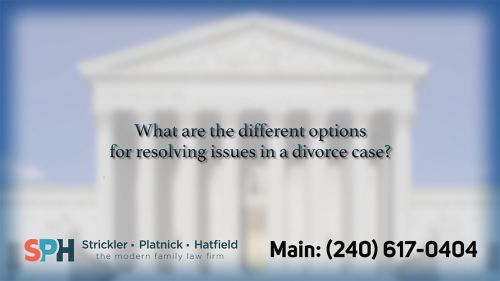Menu




There are multiple options for addressing the issues in a divorce. They run the gamut from the least contentious and least costly to the those that require the expenditure of a great deal of both economic and emotional resources.
The least costly and most civil option is for parties who are separating or divorcing to communicate directly. If both are in a place where they feel physically and emotionally safe, they can talk, at least conceptually, about the issues. “How would we like to share the parenting of our children?” “What do we want to do with the house?” “What are our cash flow needs?”
Unfortunately, many divorcing couples aren’t capable of that level of civil communication.
That leads to the consideration of other options, such as mediation. In mediation, the parties work with a professional specially trained in helping couples work out these types of issues. Sometimes, the parties participate in mediation without their lawyers present. Sometimes, lawyers are a part of the process.
Another option is negotiation through counsel. Each side hires an attorney and the negotiations occur between the lawyers. Sometimes there are meetings involving the parties, but often the negotiations take the form of correspondence, phone calls, and document exchanges between the lawyers.
Another dispute resolution option is referred to as “Collaborative divorce.” That is a process where all parties and their lawyers enter into a “participation agreement” and commit to work together in good faith to settle the case. The process requires that the lawyers involved have special training in Collaborative divorce. It also includes the involvement of specially trained third party neutrals, in such fields as mental health, child development, accounting, and asset valuation. There are advantages to the process, in the sense that everyone is committed to working together toward a resolution. There are also disadvantages to the process, in that if the case does not settle and the parties go to court, they are not permitted to use the same lawyers as those they used in the Collaborative process.
A final option is litigation: going to court. The benefit of every other dispute resolution option is that each is voluntary and the parties are choosing to negotiate, mediate, or use the Collaborative process. The disadvantage is that every other dispute resolution option is voluntary. If one spouse or partner will not agree to a voluntary dispute resolution method, filing suit may be the only alternative.
Regardless of what dispute resolution you choose, you should consult with a lawyer, and you should not enter into any form of binding agreement without getting legal advice.
© 2025 Strickler, Platnick & Hatfield, P.C.
Legal Disclaimer | Privacy Policy
Law Firm Website Design by The Modern Firm